Digital spending will see double-digit growth in the U.S., soaring from $83 billion in 2017 to $129.23 billion by 2021. It may be the wave of the future, but many manufacturers still depend on traditional marketing to make a sale. In the manufacturing world, traditional marketing is being kept alive by events like exhibitions, conferences, and trade shows. In fact, more than 80% of B2B marketers still use in-person events.
There are various types of proven digital marketing strategies you can implement, but it’s important to find the right ones that support your company’s objectives. Check out these six types of digital marketing and start integrating them into your next manufacturing marketing strategy!
- Social Media Marketing
Social media marketing revolves around sharing information and engaging with followers, fans, partners, and competitors on social media platforms with the goal of promoting your products and services. 93% of manufacturers are already utilizing social media as a way to generate leads and increase brand awareness.
In essence, social media marketing isn’t going anywhere and is, in fact, growing as we speak. It’s one of the best ways to get your messaging out there and directly target your desired audience. Generating leads with social media doesn’t have to be as hard as you think. In fact, we wrote a blog about it to get you started.
- Content Marketing
Content marketing is the art of using storytelling and valuable information to increase brand awareness with the goal of getting your target audience to take a profitable action. Studies show that 85% of manufacturing marketers are currently using content marketing.
Your content marketing plan helps grow ongoing and potential relationships, essentially making you a partner rather than an advertiser. When it comes to developing a successful strategy, you want to be sure you’re putting out content that’s relevant, solves a problem, and is delivered consistently and frequently.
- Search Engine Optimization (SEO)
If you’re unfamiliar with SEO, it’s the process of optimizing the content on your website so that you show up in search results on search engines like Google. Search engines decide which websites to show for a search term based on keywords mentioned on the website and links that refer to the website.
SEO has a lot to do with using the right keywords and phrases that are tailored to your industry and that you know your audience will be using to find you. Mix these keywords into your website, social media, blog posts, etc. 72% of marketers say relevant content creation was the most effective SEO tactic.
As you can see, there’s a strong connection between content, social media marketing, and SEO. The most obvious is that social media and SEO are the perfect distribution channels for content.
- Search Engine Marketing (SEM)
While SEO takes on the role of getting unpaid traffic from search engines, SEM refers to paid advertising traffic from search engines. One of the more common forms of paid advertising is Google AdWords for the simple reason that Google is the most used search engine; more than 90% of B2B buyers start their research on Google.
With SEM, the organization pays the search engine a predefined amount of money for showing a marketing message at various places within the search results for specified keywords and/or phrases.
- Pay-Per-Click Advertising (PPC)
Search Engine Marketing, along with many others, is a form of Pay-Per-Click advertising. Other forms of PPC also describe marketing methods where the organization pays for each click on a link to the website. Apart from search engines, almost all social networks offer the opportunity for PPC advertising. It has been proven that PPC visitors are 50% more likely to purchase something than organic visitors.
Other forms of PPC advertising may include Bing Ads, social advertising on Facebook, LinkedIn, Instagram, etc., display advertising, and many more. Search ads can increase brand awareness by up to 80%. PPC is an invaluable marketing avenue for manufacturing businesses. It offers instant visibility online and is a must for companies looking for both a quick win and a long-term lead generator.
- Email Marketing
Email Marketing has been proven to be one of the best converting marketing channels. According to Radicati’s 2016 Email Statistics report, email will be used by 3 billion people by 2020. To put that into perspective, that’s almost half of the world’s population. People are constantly checking and sending emails – 205 billion per day, to be exact.
According to 80% of professionals, email marketing drives customer acquisition and retention. There are multiple effective channels to communicate with your targeted audience, but it’s clear that email is one of the most popular modes of communication. Let’s face it, business communication runs on email.
The manufacturing industry is rapidly shifting toward digital. It might seem difficult to navigate, but the benefits will far exceed your expectations. If you’re ready to generate more business, roll up your sleeves and start developing a digital strategy that your customers can’t resist.











